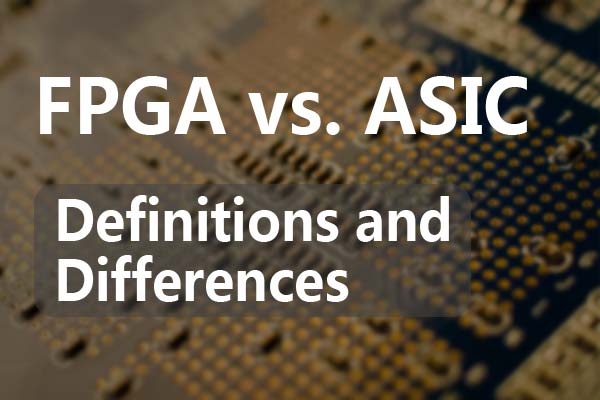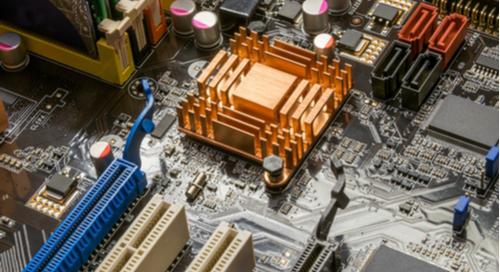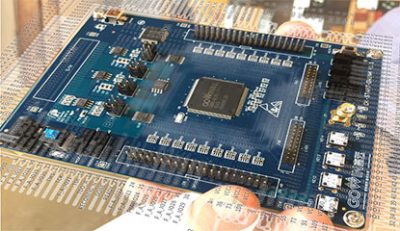Products Category
- FM Transmitter
- 0-50w 50w-1000w 2kw-10kw 10kw+
- TV Transmitter
- 0-50w 50-1kw 2kw-10kw
- FM Antenna
- TV Antenna
- Antenna Accessory
- Cable Connector Power Splitter Dummy Load
- RF Transistor
- Power Supply
- Audio Equipments
- DTV Front End Equipment
- Link System
- STL system Microwave Link system
- FM Radio
- Power Meter
- Other Products
- Special for Coronavirus
Products Tags
Fmuser Sites
- es.fmuser.net
- it.fmuser.net
- fr.fmuser.net
- de.fmuser.net
- af.fmuser.net ->Afrikaans
- sq.fmuser.net ->Albanian
- ar.fmuser.net ->Arabic
- hy.fmuser.net ->Armenian
- az.fmuser.net ->Azerbaijani
- eu.fmuser.net ->Basque
- be.fmuser.net ->Belarusian
- bg.fmuser.net ->Bulgarian
- ca.fmuser.net ->Catalan
- zh-CN.fmuser.net ->Chinese (Simplified)
- zh-TW.fmuser.net ->Chinese (Traditional)
- hr.fmuser.net ->Croatian
- cs.fmuser.net ->Czech
- da.fmuser.net ->Danish
- nl.fmuser.net ->Dutch
- et.fmuser.net ->Estonian
- tl.fmuser.net ->Filipino
- fi.fmuser.net ->Finnish
- fr.fmuser.net ->French
- gl.fmuser.net ->Galician
- ka.fmuser.net ->Georgian
- de.fmuser.net ->German
- el.fmuser.net ->Greek
- ht.fmuser.net ->Haitian Creole
- iw.fmuser.net ->Hebrew
- hi.fmuser.net ->Hindi
- hu.fmuser.net ->Hungarian
- is.fmuser.net ->Icelandic
- id.fmuser.net ->Indonesian
- ga.fmuser.net ->Irish
- it.fmuser.net ->Italian
- ja.fmuser.net ->Japanese
- ko.fmuser.net ->Korean
- lv.fmuser.net ->Latvian
- lt.fmuser.net ->Lithuanian
- mk.fmuser.net ->Macedonian
- ms.fmuser.net ->Malay
- mt.fmuser.net ->Maltese
- no.fmuser.net ->Norwegian
- fa.fmuser.net ->Persian
- pl.fmuser.net ->Polish
- pt.fmuser.net ->Portuguese
- ro.fmuser.net ->Romanian
- ru.fmuser.net ->Russian
- sr.fmuser.net ->Serbian
- sk.fmuser.net ->Slovak
- sl.fmuser.net ->Slovenian
- es.fmuser.net ->Spanish
- sw.fmuser.net ->Swahili
- sv.fmuser.net ->Swedish
- th.fmuser.net ->Thai
- tr.fmuser.net ->Turkish
- uk.fmuser.net ->Ukrainian
- ur.fmuser.net ->Urdu
- vi.fmuser.net ->Vietnamese
- cy.fmuser.net ->Welsh
- yi.fmuser.net ->Yiddish
FPGA vs. ASIC: Defintions and Differences

FPGA and ASIC are the two mainly types of the most important chip technologies that used in integrated circuit. But they are used for different purposes because have different characteristics in many aspects. If you are not clear with the differences between them or use them in the wrong place, you may suffer losses.
On this page, we will introduce what is FPGA and ASIC, and the differences of characteristics and applications between them, you can find out the problem and learn how to choose the better one for your business through this share. Let's keep reading!
Sharing is Caring!
Content
● What are the Differences between FPGA and ASIC?
● FAQ
ASIC stands for Application-Specific Integrated Circuit. Furthermore, as the name implies, it is a chip that serves the purpose for which it has been designed and does not permit reprogramming or modification. Which, in turn, means that it cannot perform another function or execute another application once programming is complete.
Since the ASIC’s design is for a specific function, this determines how the chip receives its programming. The programming process itself consists of drawing the resultant circuit permanently into the silicon.
In terms of applications, ASIC chip technology is in use in electronic devices such as laptops, smartphones, and TVs, to give you an idea of the scope of their use.

Field Programmable Gate Array or FPGA is in direct competition with ASIC chip technology. Also, FPGA is, in essence, a chip that can be programmed and reprogrammed to perform numerous functions at any single point in time.
Furthermore, a single chip is comprised of thousands of units called logic blocks, that are linked with programmable interconnects. The FPGA’s circuit is made by connecting several configurable blocks, and it has a rigid internal structure. In summary, an FPGA is essentially a programmable version of an ASIC.
Overall, the FPGA affords general functionality that allows programming to your specifications. However, like most things in life, there are side effects of FPGA’s versatility. In this case, it is an increased cost, increased internal delay, and limited analog functionality.
The Introduction to the FPGA
What are the Differences between FPGA and ASIC?
Over the next several paragraphs, I will provide a side-by-side comparison of both FPGA and ASIC in terms of application, commercial viability, and technological aspects. Specifically, they are NRE, design flow, performane and efficiency, cost, power consumption, size, time to market, configuration, barriers to entry, per unit cost, operating frequency, analog designs, applications. Keep in mind that both technologies excel in various applications and criteria, and it usually devolves into which suits your individual needs in reference to choice.
NRE
NRE stands for Non-Recurring Engineering costs. As you can imagine, with the words recurring and costs, in the same sentence, every business is concerned when they hear those two words. So, it is safe to say that this is an essential deciding factor. Moreover, in the case of ASIC, this is exceptionally high, whereas, with FPGA, it is nearly non-existent.
However, in the grand scheme, the total cost gets lower and lower the more significant the quantity you require in terms of ASIC. Furthermore, FPGA can cost you more overall since its individual costs are higher per unit than ASIC.
Design Flow
Every engineer and PCB designer prefer a more trouble-free and simplistic design process. Just because what you do is complex, does not mean that you want the process itself to be complicated. Therefore, in terms of the simplicity of design flow, FPGA is hands down less complicated than ASIC.
This is due to the FPGA’s flexibility, versatility, shorter time to market, and the fact that it is reprogrammable. Whereas, with ASIC, it is more involved in terms of design flow because it is not reprogrammable, and it requires costly dedicated EDA tools for the design process.
Performance and Efficiency
In terms of performance, ASIC outperforms FPGA by a small margin, primarily due to lower power consumption and the various possible functionalities that you can layer onto a single chip. Also, FPGA has a more rigid internal structure, whereas, with an ASIC, you can design it to excel in power consumption or speed.
Cost
Even with the increased NRE cost, ASIC are thought to be more cost-effective, all things considered as compared to FPGA, which are only profitable when developed in smaller quantities.
Power Consumption
As I mentioned previously, ASICs require less power and thus provide a better option than the higher power consumption FPGA. Especially with electronic devices that are battery operated.
Size
In terms of size, it is a matter of physics. With an ASIC, its design is for one functionality; therefore, it consists of precisely the number of gates required for the desired application. However, with FPGA’s multifunctionality, a single unit will be significantly larger, because of its internal structure and a specific size that you cannot change.
Time to Market
So, as mentioned earlier, FPGA affords a faster time to market than ASIC due to its simplicity in terms of the design flow. Moreover, ASIC also requires layouts, back end processes, and advanced verification, all of which are time-consuming.

Configuration
Overall, the most apparent difference between FPGA and ASIC is programmability. Therefore, the logical conclusion here is FPGA offers more options in terms of flexibility. FPGA is not only flexible, but they also provide “hot-swappable” functionality that allows modification even while in use.
Barriers to Entry
Barriers to entry, in essence, refers to the difficulty in acquiring these technologies and the upfront cost associated with it. In reference to ASIC, this is exceptionally high due to NRE and complexity of design as well as operation. Reports indicate that ASIC development can range into the millions, whereas with FPGA, you can begin development with less than a few grand (<$5000).
Per Unit Cost
Although ASIC has a higher NRE, it's per-unit cost is less than that of FPGA, which makes them ideal for mass production design projects.
Operating Frequency
In terms of design specifications, FPGA has limited operating frequencies. This is one of those side effects of its flexibility (reprogrammable). However, with ASIC more focused approach to functionality, it can operate at higher frequencies.
Analog Designs
If your designs are analog, you will not be able to use FPGA. However, in the case of ASIC, you can utilize analog hardware like RF blocks (Bluetooth and WiFi), analog to digital converters, and more to facilitate your analog designs.
Applicatons
First of all, it is a fact that flexibility is FPGA’s strong suit, which makes it ideal for devices and applications that require frequent modification, like designing DC / DC regulator used for overvoltage protection. However, ASIC is best suited for more permanent applications that do not require modification. Overall, if you are designing a mass-production type project, the ASIC is the more cost-effective route to go, provided your devices do not require configuring or reconfiguring.

1. Q: Are FPGA Dead?
A: FPGA is definitely not a dead end. Because of their reconfigurability, as long as ASIC is a thing, they will never become obsolete.
2. Q: Is it Hard to Program on FPGA?
A: FPGA vendors boast that their products are ideal alternatives to DSP, CPU and GPU - even if they are all in one device - but it is well known that they are difficult for software engineers to program because they are different from traditional processors.
3. Q: What is FPGA and Why it is so Called?
A: The so-called field programmable gate array (FPGA) is because their structure is very similar to the outdated "gate array" form of application specific integrated circuit (ASIC).
4. Q: What can FPGA Do?
A: FPGA is particularly useful for application specific integrated circuit (ASIC) or processor prototyping. The FPGA can be reprogrammed until the ASIC or processor design is completed and there are no errors, and the actual manufacturing of the final ASIC begins. Intel uses FPGA to prototype the new chip.
● How LTM4641 μModule Regulator Efficiently Prevents Overvoltage?
● How to Measure Transient Response of a Switching Regulator?
● How SCR Thyristor Overvoltage Crowbar Circuits Protects Power Supplies from Overvoltage?
● An Ultimate Guide to Zener Diodes in 2021

